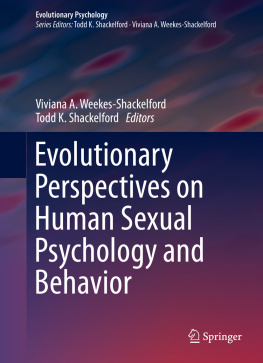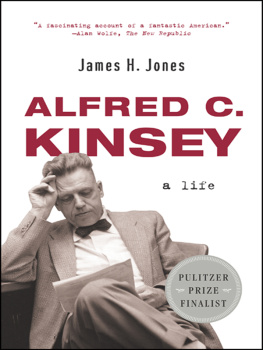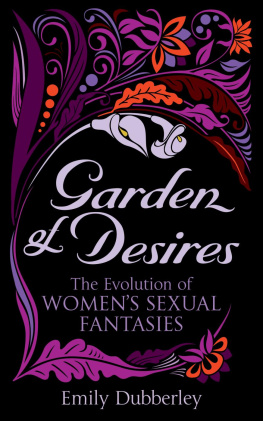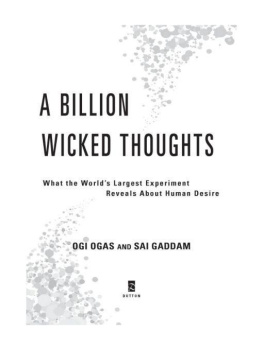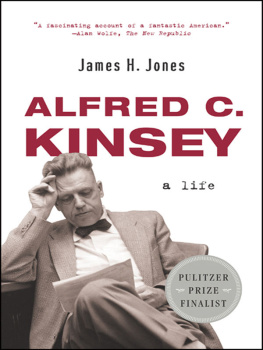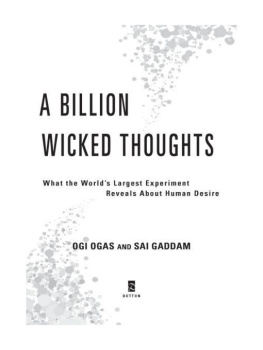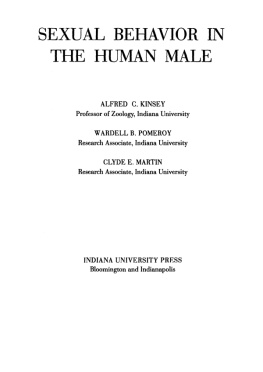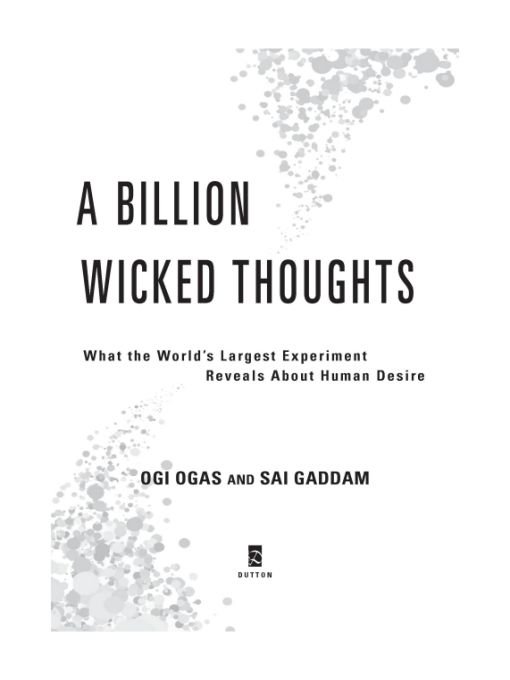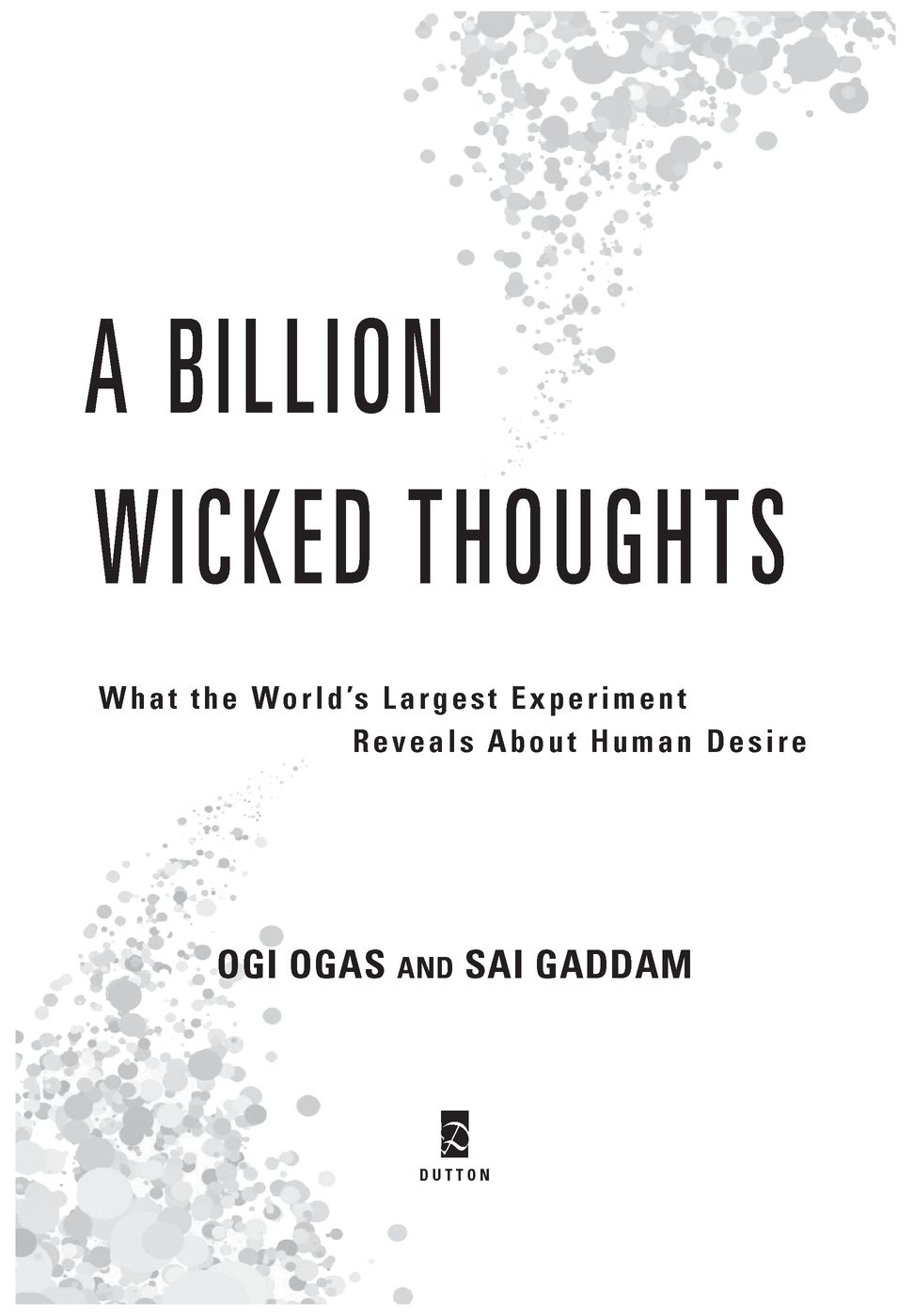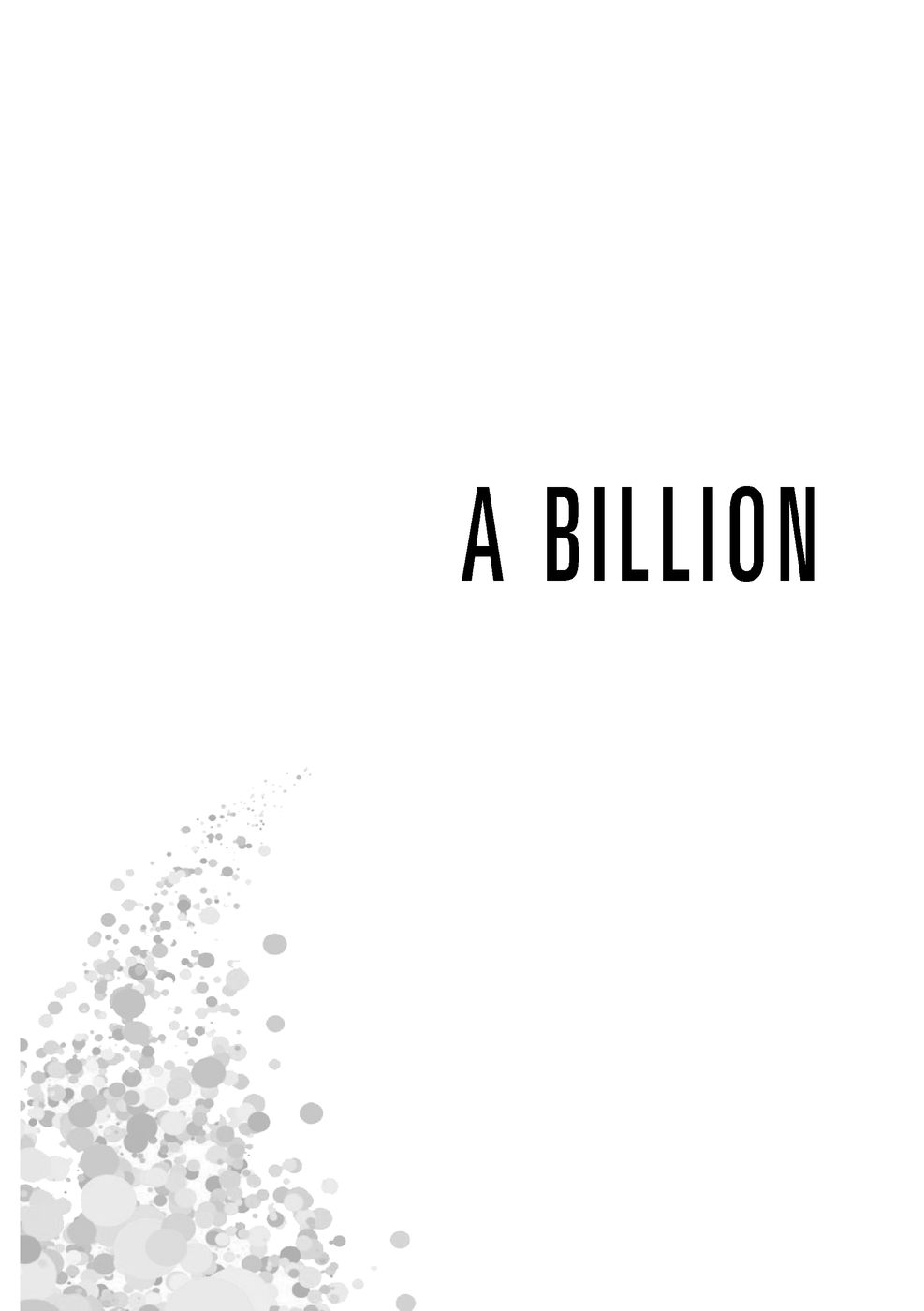Table of Contents
Every invention in communication technologythe printing press, photography, motion pictures, videotape, the Internetwas quickly co-opted to produce and disseminate erotica. Just as the microscope and the telescope illuminated for the first time the very small and the very large, A Billion Wicked Thoughts uses the power of the Internet to illuminate, with unprecedented wattage, human male and female desires. Ogas and Gaddam analyzed a mountain of Internet data to produce a breakthrough in the study of human sexuality.
Donald Symons, professor emeritus, University of California, Santa Barbara; author of The Evolution of Human Sexuality
A Billion Wicked Thoughts provides a brilliant, thoroughly researched, and totally engaging analysis of human sexuality using vast and original analyses of the Internet. It furnishes an X-ray of male and female sexual minds and explains why they differ so profoundly. The insights it yields are often surprising, sometimes shocking, and never boring. I couldnt put the book down.
David M. Buss, author of Evolutionary Psychology: The New Science of the Mind and The Evolution of Desire: Strategies of Human Mating
On the Internet, the evolutionary past meets futuristic technology, enabling the blossoming of all manner of sexual tastes, fantasies, and desires. Ogas and Gaddam have mined these new sources of informationarguably the worlds largest experiment on human behaviorto produce a fascinating and terrific book on human sexuality, in all its timeless mysteries and ultramodern manifestations. This well-written, entertaining book is packed with information, ideas, and insights. There is no better way to understanding your desires, your partners, or anyone elses.
Roy Baumeister, professor of psychology, Florida State University
A brilliant romp through the darkest recesses of our sexual minds, based on the unwitting confessions of millions of anonymous Internet users.
Simon LeVay, author of The Sexual Brain and Gay, Straight, and the Reason Why
Ogas and Gaddam mine the power of the Internet for expressions of male and female mating psychology that are unfiltered by social expectations. In the process, they unearth A Billion Wicked Thoughts, many of which depart radically from our standard script for human mating psychology. These counterintuitive insights into the sexual psyche of our species should provide much fodder for discussion among sex researchers.
Paul Vasey, professor of behavioral science, University of Lethbridge
FOREWORD
My first encounter with one of the authors of this book, Ogi Ogas, was about a year ago. True to the online nature of the research he was doing for this book, I heard from him via e-mail.
Ogi had read a book on sexuality called Warrior Lovers that I wrote a few years ago, along with Don Symons. In it we used slashstories about heterosexual male fictional characters who fall in love, such as Captain Kirk and Mr. Spock or Clark Kent and Lex Luthorrevealing an unexpected yet telling aspect of female desire.
Slash is, in a sense, the ultimate romance for its female readers: one in which there is no doubt at the end of the tale that these heroes have found their soul mates. Ogi wanted to know if I had any new work to tell him about. To be honest, I was a bit surprised by the initial e-mailmost conversations I have about slash are with other womenbut it soon became clear that Ogi was interested not only in slash but in the bigger picture of human sexuality that can be found in the vast world of the Internet. There is a lot of truth to the belief that if you can imagine it, you can find it as Internet porn. That initial e-mail was the beginning of a long and lively conversation about the nature of sexual desire.
But this book does far more than just show how wild and wooly online porn can be. It opens your eyes to the sexual desires of millions of people and it does so in a unique and valuable way. So much research on sexuality relies on surveys and questionnaires that ask people to reveal secrets they arent comfortable sharing (least of all with a researcher who will do who-knows-what with the information). There is a real advantage in finding other methods of insight into our desiresunobtrusive measures that dont require people to actively participate in the process of data collection. Just as Don and I demonstrated with commercial erotica and slash in Warrior Lovers, Ogi Ogas and Sai Gaddam study digital footprints on the Internet to illuminate our understanding of the stark differences between the desires of males and females.
The most startling insights often come from the most unexpected sources. The authors academic background, for instance, is hardly typical for the authors of a book on sex. Ogi and Sai were classmates in graduate school and their PhDs are from the Department of Cognitive and Neural Systems at Boston University. Most cognitive neuroscience researchers, if you hadnt already guessed, arent doing research on porn. But Ogi and Sais computational neuroscience background led them to ask novel questions such as how does the brain software that generates sexual desire and arousal actually work? No one else in their field was thinking that way. It led them to not only use the Internet as a source of data (their data-mining approach was one their mathematical background made them uniquely suited to) but also to an adaptationist approach to human sexual behavior. This approach views male and female sexuality through a functional lens, as the products of differing selection pressures (or problems) that males and females had to face (or solve) over evolutionary time.
The adaptationist perspective has been incredibly fruitful, particularly in the area of female sexuality. Historically, there have been a number of challenges to studying female desire and sexual behavior. There have been times when it wasnt considered appropriate for a doctor to even look at his female patients genitals. For male researchers to ask women about their sexual desires and behavior was simply not acceptable. Even today, a female sex researcher will have a much easier time in terms of how both participants and others view her and her work. So the study of female sexuality has languished behind that of males, especially back in the day when most scientists and researchers were male. It was often only considered legitimate to study female sexuality if you were trying to help women become pregnant. But the rise of the adaptationist perspective (led by both male and female researchers) has focused attention on questions surrounding the female choice of partners and how such choices would have resulted in greater reproductive success in the past. This research has led to discoveries about female mate preferences, the role of hormones and the ovulatory cycle in female sexuality, and the function of female orgasm.
Without an adaptationist perspective, its unlikely anyone would have designed a study to look at how well exotic dancers are tipped according to their ovulatory cycle. The fact that tips are higher when dancers are more fertile tells us something about both female desirability and behavior during ovulation and how attractive this is to males.



